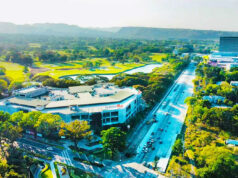A WORKSHOP at the Far Eastern University (FEU) is teaching architecture students how to create sustainable communities to avoid amplifying urban problems.
A case in point raised by visiting professor Regina Mapua Lim, associate lecturer at the Joint Center for Urban Design at Oxford Brookes University, was how to transport food safely to urban centers from rural towns as mobility is a factor in making a city livable.
Cities usually source food and water from rural communities and “cities must be able to provide the means to transport those raw materials while following stringent safety standards,” read a statement e-mailed by the FEU’s public relations staff.
Ms. Lim “illustrated that constructing too many commercial spaces, for example, may just worsen traffic and pollution, affecting the transfer of goods within the city.”
The workshop involved presenting student research findings on public markets in Manila.
Some groups investigated the topography of the Sta. Ana and Dangwa markets and proposed green roadways and balanced public-private road allocations to ease traffic and transport food safely.
Other students also thought of using the estero system in Manila, drafting plans for possible river rehabilitation programs and future trade routes. They also studied the effect of large supermarkets on equitable access to food and livelihood opportunities provided by public markets.
Urban design is more than just aesthetics, the statement quoted Ms. Lim as saying.
“We have to consider all the stakeholders, motorists, pedestrians, vendors, among others, when we draft our plans,” the London-based architect added.
The talk was titled “Livable Cities in the Philippines: A forum on Design Possibilities for Urban Centres in the Developing World.” It was conducted in collaboration with the FEU Public Policy Center.



